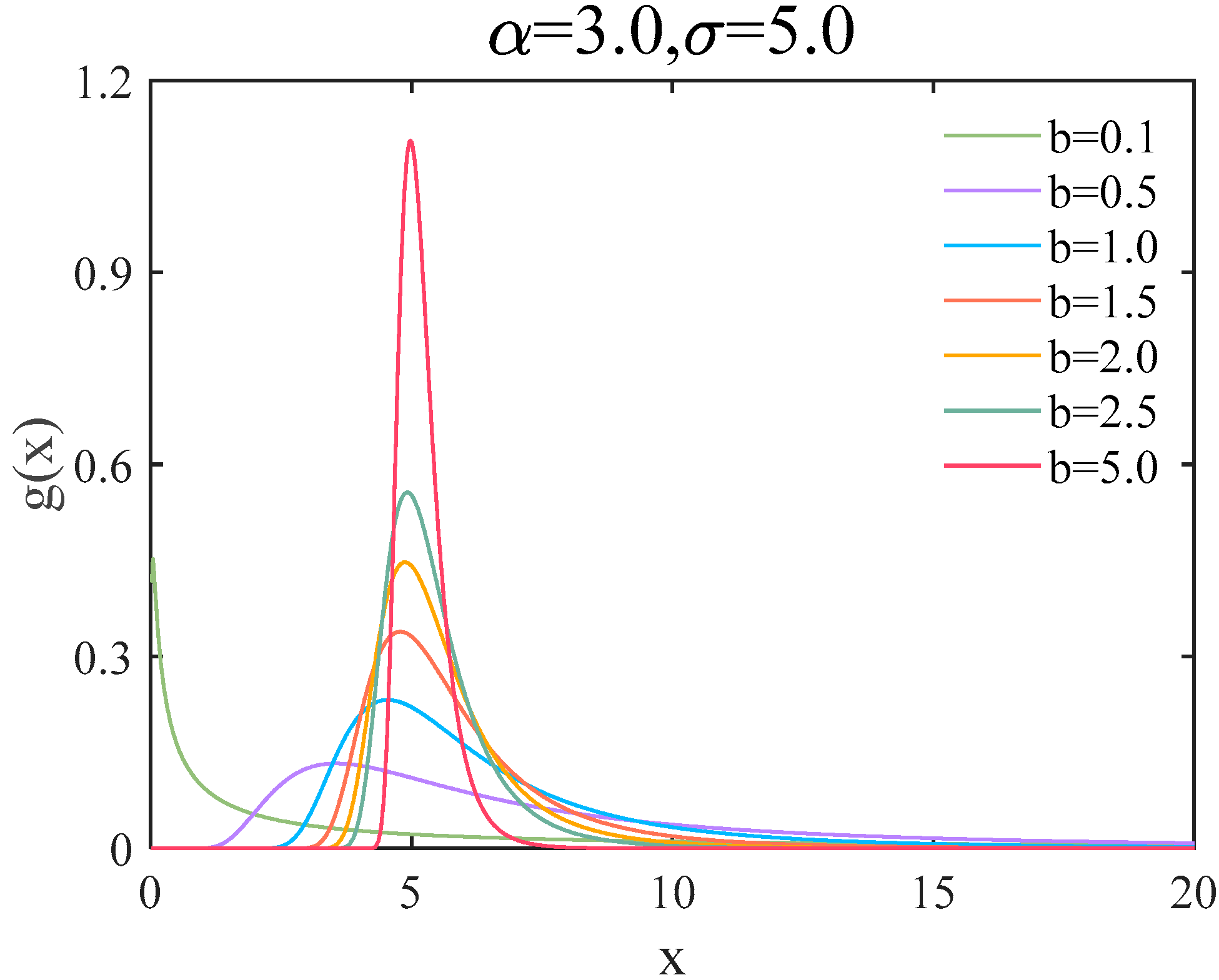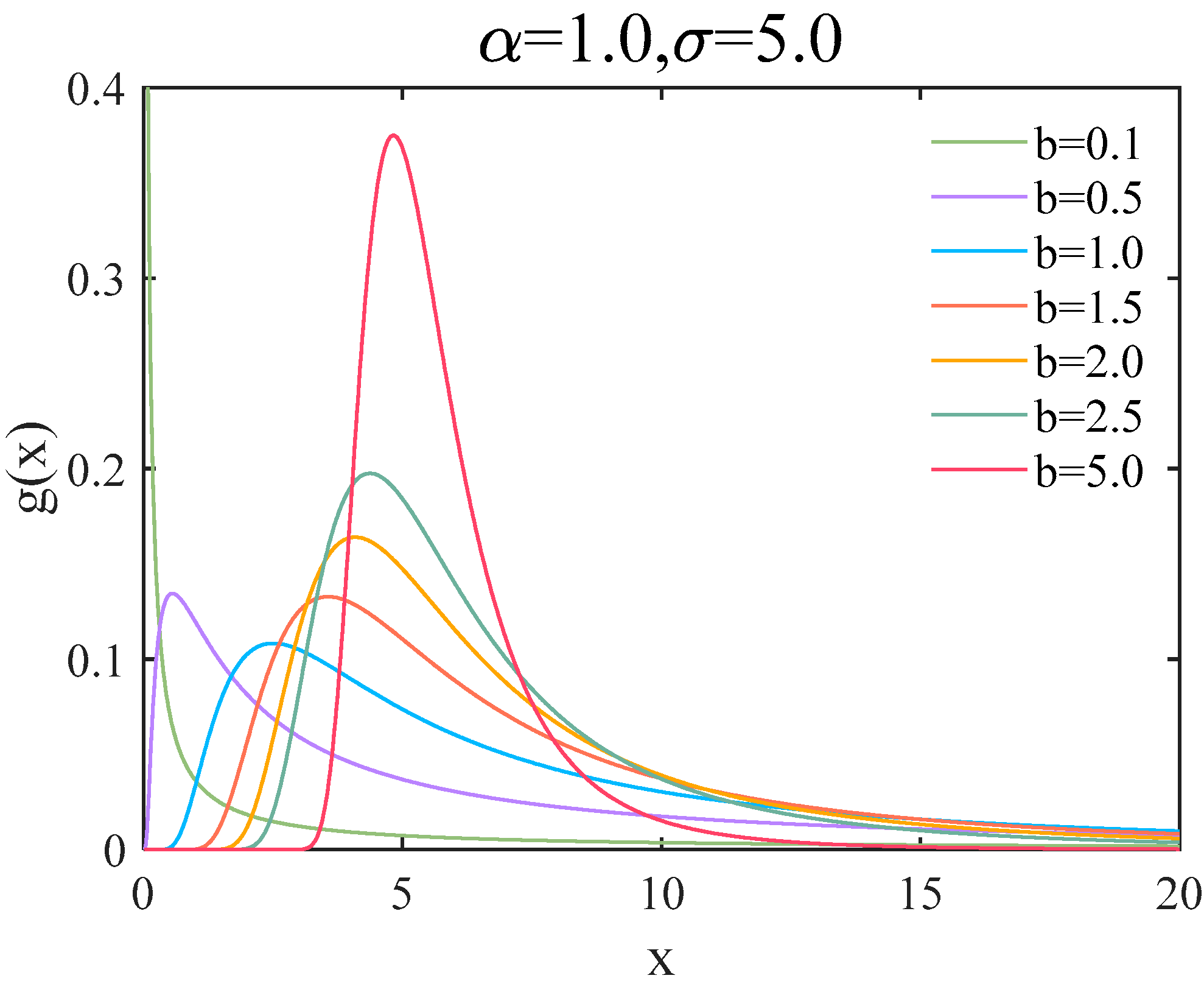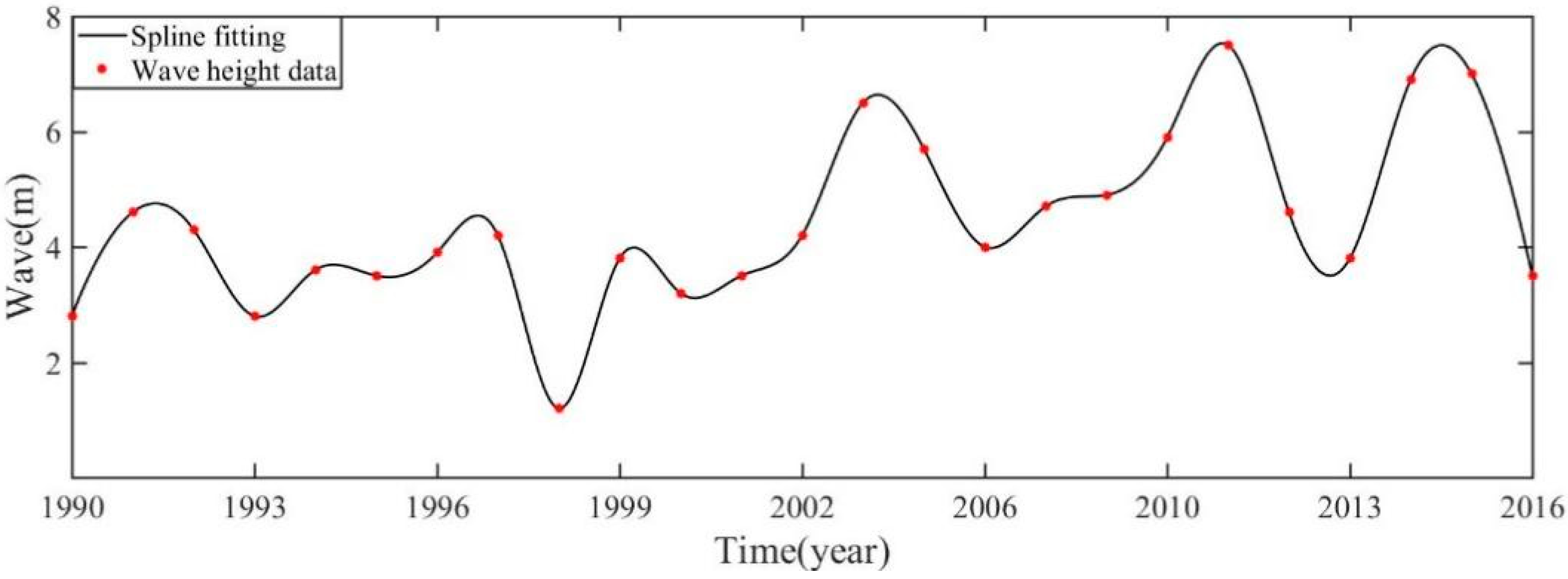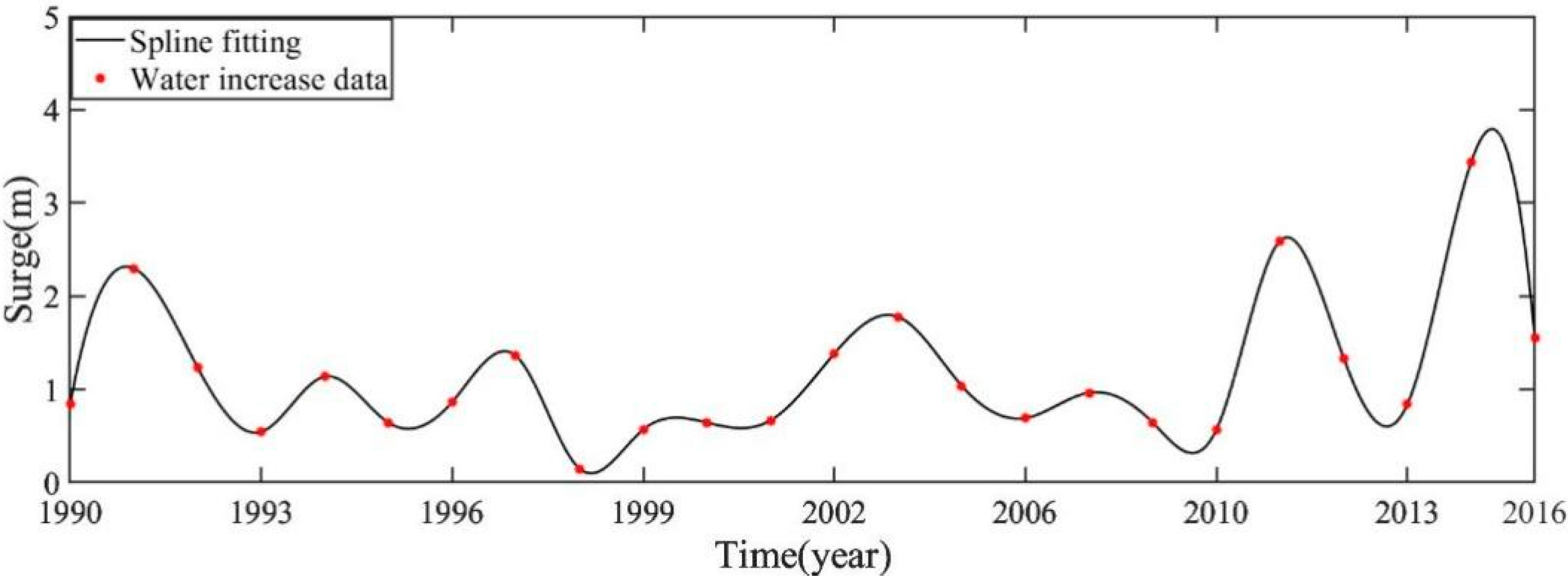3. Engineering Case Calculation and Analysis
This paper selects the measured hydrological data of the Zhanjiang Naozhou Marine Environment Monitoring Station during the flood period from 1990 to 2016 as the input data and uses the compound distribution model established above to reflect the temporal and spatial statistical characteristics to perform relevant statistical analysis on wave height and water increase. Sampling of the wave height and water increase data of the Naozhou Observatory in the Western Guangdong Sea is performed with the unit time step 1 month. Then, the data of wave height and water increase per unit time step constitute a series of random samples. Considering the correlation between wave height and water increment, the statistical characteristics of wave height and water increment with time are obtained. That is to say, wave height and water increase are regarded as random processes varying with time. Moreover, the time interval
1 year. That is, these data are sampled every 12 months (
):
Figure 3 and
Figure 4 are the 25-year wave height and water increase data set sampling every 12 months from 1990 to 2016, respectively.
First, the samples of the wave height and water increase are examined. The K-S test results are listed for the Gumbel distribution, Weibull distribution, Pareto distribution, and Pearson-Ⅲ distribution of the wave height and water increase time series. The results showed that all four groups of sequences passed the K-S test, where
is test value,
is critical value, as shown in
Table 1 and
Table 2.
Table 3 and
Table 4 show the specific probability density values when different distributions are fitted to the tail data. It can also be seen that, compared with the commonly used extreme value models, the EED-I model can better describe the tail characteristics of the data when fitting different marine environmental element data under different data ages. Taking the probability density values of different distributions corresponding to the wave height of 8.5 m in
Table 3 for example, when the data age is 20 years, the probability density value of the EED-I distribution is 0.0125, which is 28.8% larger than the probability density value of the Gumbel distribution, and is 154.65% larger than the probability density value under the Weibull distribution; when the data age is 16 years, the probability density value of the EED-I distribution is 8.23% larger than the probability density value under the Gumbel, and 56.05% larger than the probability density value under the Weibull distribution.
In order to further verify the stability of the model, a period of time (1998–2016) in the wave height sequence was extracted, and the Gumbel and EED-I type distributions were used to calculate the design wave heights under different return periods, and compared with the entire time series, namely, the wave height data of Naozhou Station from 1990 to 2016. The design wave height and error calculated by different distribution models under different return periods are obtained, as shown in
Table 5. It can be seen from
Table 5 that when the measured data years are reduced, the two distribution models will produce certain errors, and the longer the return period, the greater the error. However, the error of the EED-I distribution is much smaller than that of the traditional Gumbel distribution. Under the condition of a return period of 100 years, the error of the EED-I distribution is almost only half of that of the Gumbel distribution.
According to the wave height and water increase data of Naozhou Station from 1990 to 2016, the return levels of the wave height and water increase in different return periods under the EED-I type distribution are calculated, as shown in
Table 6.
According to the likelihood function and Gumbel–Pareto distribution, we obtained the respective parameter estimates for marginal distribution of the probability model; the results are shown in
Table 7.
According to
Table 6, for the once-in-a-hundred-year value of
month series, wave height is 8.78 m and the water increase is 2.28 m. The corresponding combination of once-in-a-hundred-year calculated by using the new stochastic compound distribution model are 8.74 m for the effective wave height, and 1.52 m for the water increase.
The design of the deck elevation should consider many factors, the most important of which are the astronomical tide, storm surge and wave height that constitute the elevation of the water body. Other uncertain factors such as the subsidence of the platform and the seabed are generally not specifically studied; therefore, the deck elevation is generally often provided with sufficient spacing above the design wave crest. In addition, consideration should be given to providing an air gap between the height of the wave crest and the deck, generally 1.5 m, for waves larger than the design wave to pass.
Astronomical tides have deterministic and periodic laws. The trend value of the tide level change can be determined by the deterministic tidal force; the fluctuation value of the tide level change is affected by its random hydrological and geographic factors. Therefore, if the small random fluctuations of the tide level are ignored, the astronomical tide can be regarded as a certain natural phenomenon with a long period of 18.61 years. In this paper, the astronomical tidal height datum is located at 2.24 m below the mean sea level. We use the highest annual extreme astronomical tidal level at Naozhou Station from 2000 to 2018 at 2.02 m.
To determine the design value of the maximum wave height, the “Standards for Classification and Construction of Offshore Mobile Drilling Ships” of the Ship Inspection Bureau of the People’s Republic of China and the “Guidelines for the Design of Marine Steel Structures” of Japan are used and these stipulate that the maximum design wave height is
In which, is the breaking critical wave height and is the once-in-a-hundred-year wave height. The effective wave height calculated by the stochastic compound distribution is used here, which is 8.74 m.
According to China’s “Seaport Engineering Standards”, when the submarine slope
, the ratio of the breaking wave height and the water depth of the wave can be determined according to
Table 8, so that the maximum wave height design value
can be obtained.
Assuming the offshore platform has a water depth of 35 m and a slope ratio of 1/200. Therefore, the breaking wave height is =24.15 m, so the maximum wave height design value is taken as
So far, the design values of each environmental element are obtained: the maximum wave crest is 8.74 m (0.5 times the maximum design wave height); the water increase is 1.52 m; the astronomical tide is 2.02 m; the air gap is 1.5 m. Therefore, the design value of the deck elevation calculated by the stochastic compound distribution model is 13.78 m. In the once-in-a-hundred-year time, the univariate EED-Ⅰ distribution calculates the wave height and the return period of the increase in water. The comparison between the simple superposition method and the calculation result of the new model is shown in
Table 9, where
is Maximum Peak Height Once in a Hundred Years/m,
is Water Increase Once in a Hundred Years/m.
It can be seen from
Table 9 that the stochastic compound distribution takes into account the correlation between wave height and water increase, and its calculation result is slightly lower than that of univariate superposition, which improves the problem of high design value caused by simple superposition of univariate, and thus can reduce engineering cost with certain practical significance.









